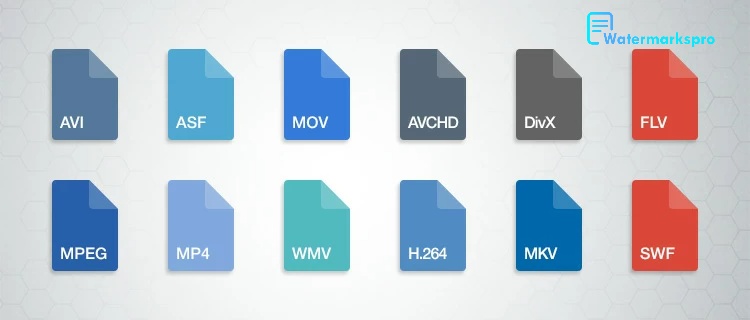There are many different types of video formats, each with its own strengths and weaknesses. Video quality can vary significantly depending on the video format used. Different video formats employ various compression methods, which directly impact the quality and file size of the video. Generally, video formats with higher compression tend to have smaller file sizes but may sacrifice some video quality, while formats with lower compression offer higher video quality at the cost of larger file sizes. Some of the most common video formats include:

- AVI (Audio Video Interleave): A widely used video format developed by Microsoft. AVI files can contain both audio and video data but tend to have large file sizes.
- MP4 (MPEG-4 Part 14): One of the most popular video formats today, offering a good balance between quality and file size. MP4 is widely supported across devices and platforms.
- MOV (QuickTime Movie): Developed by Apple, MOV files are commonly used on macOS devices but can also be played on other platforms with the appropriate software.
- WMV (Windows Media Video): Developed by Microsoft, WMV files are optimized for Windows systems and offer good compression while maintaining decent quality.
- MKV (Matroska Video): An open-source and versatile video format capable of holding various types of multimedia data, including multiple audio and subtitle tracks.
- FLV (Flash Video): Originally designed for streaming video over the internet, FLV files can be played using Adobe Flash Player.
- MPEG (Moving Picture Experts Group): A family of video formats with various iterations, such as MPEG-1, MPEG-2, and MPEG-4. MPEG-2 is commonly used for DVDs, while MPEG-4 includes formats like MP4.
- AVCHD (Advanced Video Codec High Definition): Primarily used for high-definition video recording and playback, often found in camcorders and digital cameras.
- WebM: An open and royalty-free video format developed for web use. WebM files are designed to provide high-quality streaming video with good compression.
- 3GP and 3G2: Commonly used for video playback on mobile devices, particularly older cell phones.
- HEVC (High-Efficiency Video Coding): Also known as H.265, this newer format provides improved compression compared to older codecs like H.264 (AVC).
- VP9: An open and royalty-free video format developed by Google. VP9 offers efficient compression and is commonly used for streaming videos on the web.
- H.264 (AVC): A widely used video compression format known for its broad compatibility and good video quality.
The best video format for you will depend on your specific needs and requirements. If you are looking for a format that is compatible with most devices and platforms, MP4 is a good choice. If you need a format that supports high-quality video and audio, MOV or MKV are good options. And if you are looking for a format that is well-suited for streaming video over the web, FLV or WEBM are good choices.


